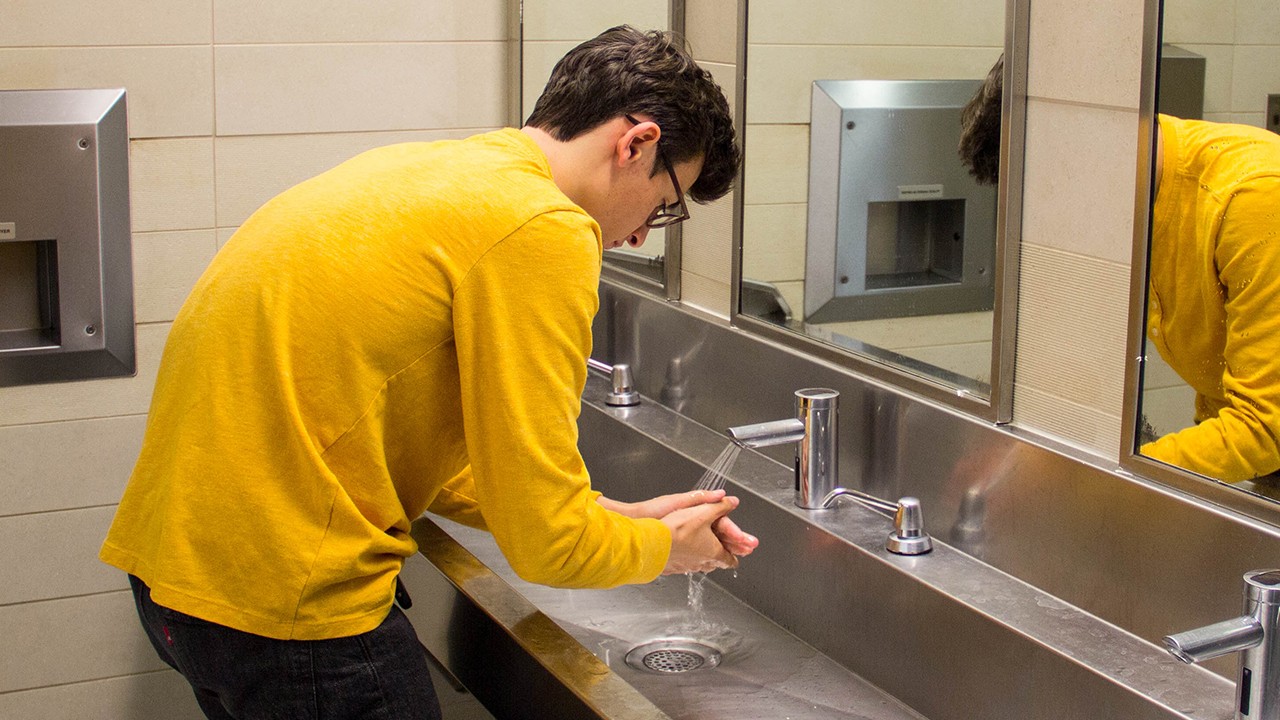As you read the guide, keep in mind that not all similar behaviors seen in unique individuals have the same cause. Each individual will have their own own way of responding to their environment and it is important to look at the whole person before making any judgments.
Some of these behaviors can serve multiple purposes and can be an individual expressing their emotions or getting sensory input in their own unique way. Refer to the checklist below to help guide how to respond to different behaviors.
- Is the student doing something dangerous to themselves or others?
- Is the student disrupting learning?
- Is the student doing something that is offensive to others?
- Is the student harming school property or another person’s property?
If the answer is yes to any of these questions, then the behavior needs to be addressed immediately.
If the answer is no to all of these questions, then think about whether the behavior needs to be addressed or if it can wait until other behaviors are under control.
Stereotypical Behaviors
What it looks like:
Hand flapping, spinning, jumping, or rocking; any repetitive movement that seems to serve no function
Why it might be happening:
Most likely it is to fulfill a sensory need in the individual or simply an expression of their emotions or character.
What to do about it:
While this type of behavior makes someone stand out, it is typically something they cannot control. Spreading awareness to others about what they are doing, and why, can help others understand and accept the individual’s neurodiversity.
Scripting
What it looks like:
Using language and making noises that are not meant for communication with others
Why it might be happening:
Typically individuals use it as self-talk or to calm themselves down when they are overwhelmed. This can also be a form of entertainment for the individual.
What to do about it:
Try different strategies to explain to the individual when it is okay to script and when it is not okay. It’s important to note that some students utilize scripting to communicate; in these cases it should not be extinguished until alternative communication is established. One solution for most cases is to designate certain environments or activities where scripting is acceptable. In environments where the individual needs to be quieter (assemblies, during learning, etc.) give the student a visual cue and reward them for following the expectations.
Repeating Questions
What it looks like:
Asking the same question over and over again, even when the individual might know the answer already
Why it might be happening:
A possible reason might be the individual is anxious about something and is looking for reassurance.
What to do about it:
Answer the question the first time it is asked. Let the individual know that you will answer the question the first time they ask but that if they continue to ask you will not answer the same question again. Instead, think of ways they can expand on the question to get more information. Teach the individual to ask a follow-up question that you will answer. Additionally, use professional judgment to determine whether this behavior is a cognitive issue or a language deficit rather than anxiety, and provide other supports to help the individual comprehend.
Aggression
What it looks like:
Using one’s own body or objects to hurt another person
Why it might be happening:
This can be happening for many reasons. (See our article, Functional Behavior Analysis and Behavior Intervention Plans, for more information about the functions of behaviors.)
What to do about it:
Consult with a behavior specialist to develop a plan to eliminate this behavior. It is crucial that everyone interacting with the individual is aware of the plan and is trained to follow through. While the first instinct might be to punish and give a lot of attention to aggression, that could backfire and only cause the behavior to increase. Use your professional judgment and seek advice from others before reacting.
Self-Injurious Behavior
What it looks like:
Using one’s own body or objects to hurt oneself; often it is in the same area of the body repeatedly
Why it might be happening:
Oftentimes self-injury is caused by an individual’s anxiety or frustration which, when heightened, results in a physical release of emotions.
What to do about it:
Make sure the individual is safe and not causing personal bodily harm. Provide them with a different outlet while the behavior is occurring or help guide the individual to a safer space. Consult with a behavior specialist as to the function of the behavior and develop a plan to teach a replacement behavior. If medical issues are of any concern, gather the IEP team to discuss.
Eloping
What it looks like:
Leaving an assigned area
Why it might be happening:
For the most part the individual is eloping either to escape an activity or environment or to gain access to something in the area they are eloping to. Other causes might be the need to release excess energy or the desire to communicate that they want to play.
What to do about it:
Consult with a behavior specialist about the function of the behavior. Then teach the individual a way to communicate appropriately that they need to leave the environment. It is important to teach them to respond to the directive “Stop!” in case they are ever in a dangerous situation and about to elope to someplace dangerous (middle of a parking lot, across the street, etc.). It might also help to provide more opportunities for movement throughout their day to help them burn off excess energy in a more appropriate way.
Tantrum
What it looks like:
Loss of control of one’s body, can include falling to the floor, crying and screaming
Why it might be happening:
Typically a tantrum is the result of an individual who has completely lost control of their actions, and the trigger could be anything. Try to identify precipitating factors that could build up to their response.
What to do about it:
Make sure the individual is in a safe environment and remove any audience from around the individual. Limit any verbal directives to the student and provide them with tools or strategies to help them calm themselves down. After the individual has regained control, it is important to begin communicating again in a calm fashion.
Picking
What it looks like:
Picking at themselves or objects
Why it might be happening:
More often than not this is either a sensory-seeking behavior or a medical issue.
What to do about it:
Consult with an occupational therapist and provide opportunities for the individual to meet this sensory need throughout the day.
Chewing
What it looks like:
Placing nonfood items in one’s mouth and chewing on them
Why it might be happening:
Chewing on inappropriate objects can be a sensory need or a response to an oral issue (especially if the chewing is focused on one area of their mouth).
What to do about it:
Consult with an occupational therapist about meeting the sensory need or look into gathering the IEP team to discuss oral hygiene and the possibility of an issue with a tooth.
Inappropriate Touching
What it looks like:
Touching themselves or others in inappropriate/private areas
Why it might be happening:
An individual could be going through self-discovery of their body parts or expressing natural desires to explore others’ bodies.
What to do about it:
Educate the individual on where and when these kinds of activities are appropriate and inappropriate. Teach the student why they might be doing this. Consult with a school nurse or health education teacher for resources.
Individuals with unique needs often lack the communication skills to properly express their own feelings or desires. It is the responsibility of the adults around them who know them best to make sure the individuals are safe and able to function in their environment. Consult with the available professionals and develop plans that focus on teaching appropriate behaviors before resorting to punitive measures. Importantly, be aware that changing behavior does not happen overnight. As we have all experienced, it can take weeks, months or years to change bad habits and it may require trying different approaches. Do not get discouraged if a strategy does not work immediately. Give it time and adjust the plan as necessary if the situation is not getting better after an expected period of time.



